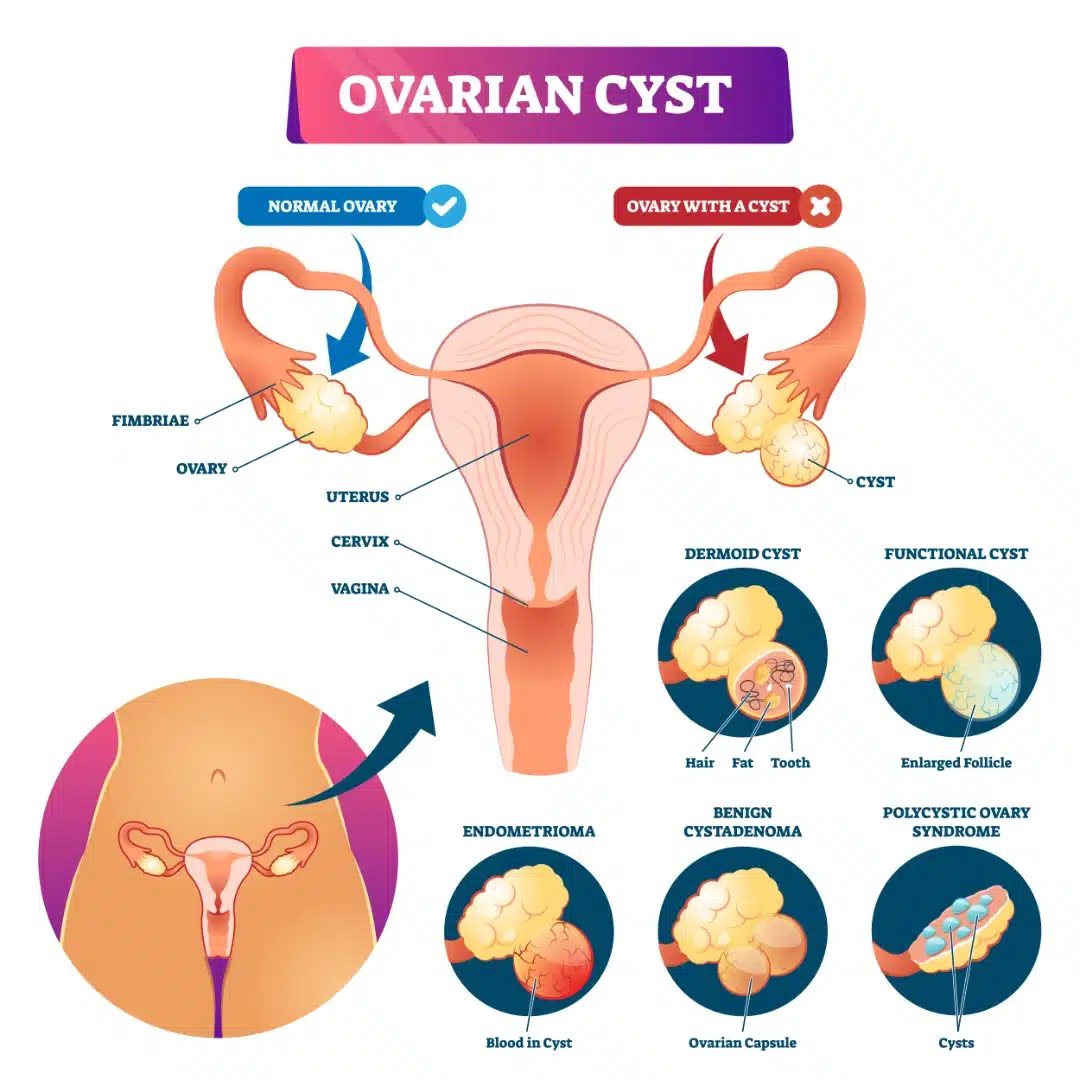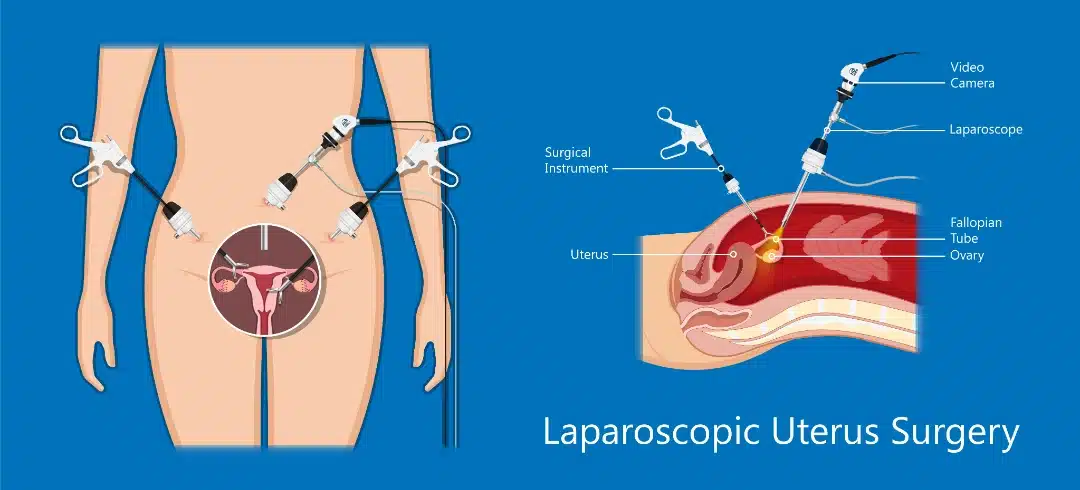
Ovarian cysts are fluid-filled sacs that can develop within the ovaries. Many women in Singapore experience ovarian cysts at some point in their lives. These cysts are often detected through pelvic ultrasound scans. However, not all of them require treatment.
There are various types of ovarian cysts; these are:
Ovarian cysts form as fluid-filled sacs on the ovaries. Common causes include hormonal imbalances during the menstrual cycle, follicle development issues, and endometriosis. Polycystic ovary syndrome (PCOS) can also lead to cysts. Most cysts are usually benign and often resolve on their own without treatment. Sometimes, some cysts can result from abnormal cell growth, leading to more complex situations.
If you experience pelvic pain, bloating, or changes in menstrual patterns, consult your doctor. They can perform tests such as ultrasounds to diagnose the type and nature of the cyst. Most cysts are harmless, but if they grow large or cause discomfort, your doctor may recommend monitoring, medications or, in some instances, surgical removal.


The symptoms of ovarian cysts include:
Big ovarian cysts might not show any symptoms or might only lead to minor discomfort. In certain cases, they can rupture, bleed, or cause the ovary to twist, a situation known as an ovarian cyst accident. This could bring about intense pain, nausea, vomiting, and even fainting. Engaging in strenuous activities could heighten this risk. If left untreated, ovarian torsion might obstruct blood supply to the ovary, potentially causing tissue death.


Certain factors can increase the risk of ovarian cysts for women in Singapore. While anyone can develop cysts, these risk factors may make you more susceptible:
If you suspect you have ovarian cysts, it can be diagnosed through various methods:

Surgery is typically suggested when the ovarian cyst is sizable or raises suspicion of cancer. This often involves a laparoscopic “keyhole” ovarian cystectomy, which removes the cyst from the ovary. However, depending on age and cancer risk, it might also entail an oophorectomy (ovary removal), laparotomy (open surgery), or other procedures.
While it is not feasible to prevent most ovarian cysts, staying attentive to your menstrual cycles and bodily symptoms and maintaining regular appointments with your gynaecologist can ensure early identification and appropriate treatment if necessary.

Aster Gynaecology © | All Rights Reserved.